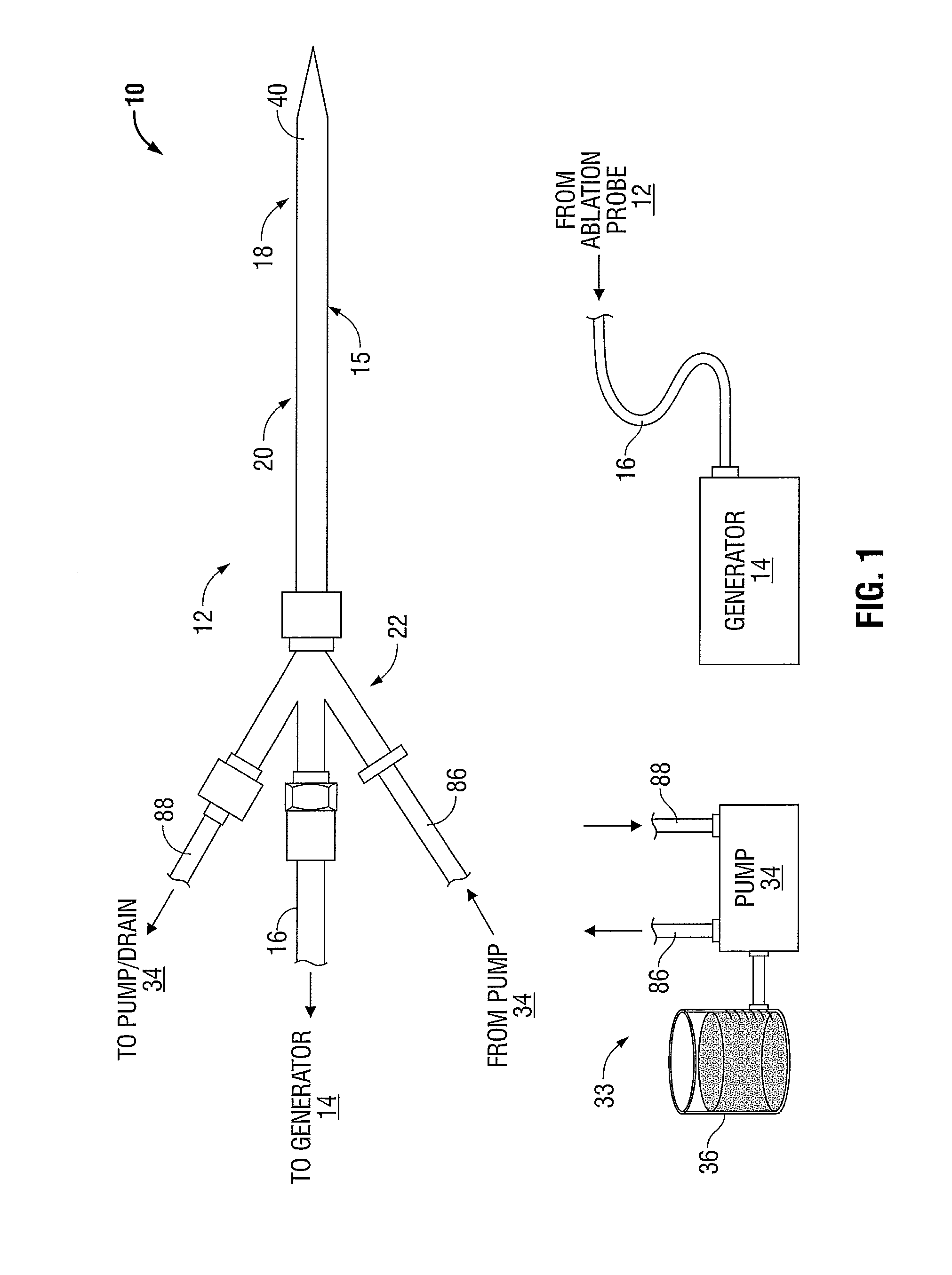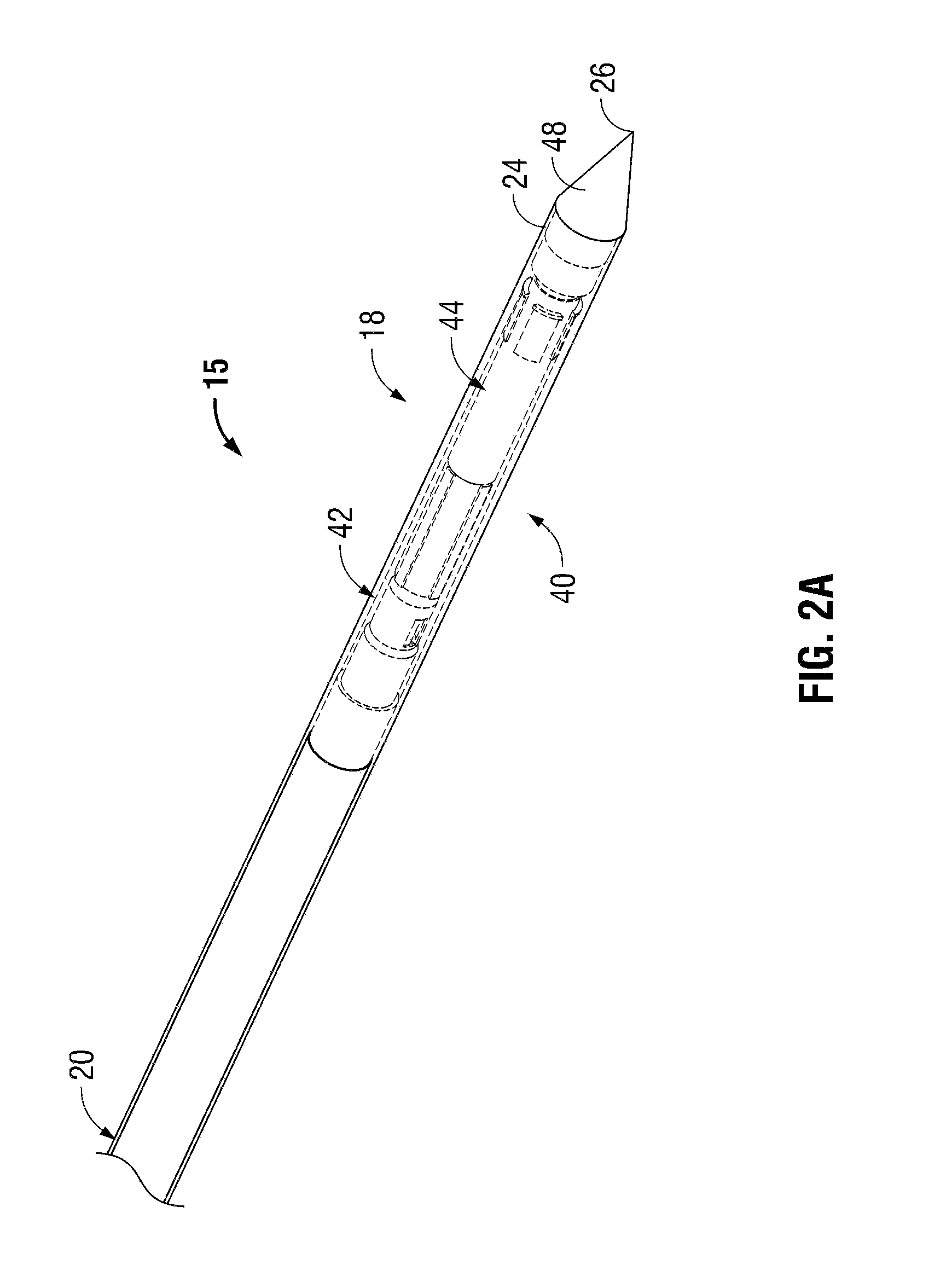Ablation systems, probes, and methods for reducing radiation from an ablation probe into the environment
a radiation reduction and probe technology, applied in the field ofablation systems, can solve the problems of routine observation of thermal damage to most types of normal cells, unwanted heating of healthy tissue, non-invasive procedures using microwave energy, etc., and achieve the effect of reducing or eliminating radiation
- Summary
- Abstract
- Description
- Claims
- Application Information
AI Technical Summary
Benefits of technology
Problems solved by technology
Method used
Image
Examples
Embodiment Construction
[0039]Particular embodiments of the present disclosure are described below with reference to the accompanying drawings.
[0040]Generally, the present disclosure relates to systems and corresponding methods for reducing or eliminating energy that radiates from ablation probes into the environment. These systems and corresponding methods require few or no changes to the electrosurgical generator that supplies power to the ablation probe. The systems include various shielding mechanisms for shielding individuals from unnecessary energy radiating from the ablation probe when it is removed from tissue.
[0041]The ablation systems according to the present disclosure include a retractable sheath or shield that shields at least the radiating portion of the ablation probe to reduce or eliminate the radiation of energy (e.g., microwave energy) into the environment. The retractable sheath may include conduits through which a shielding fluid flows to shield the radiating portion of the ablation pro...
PUM
 Login to View More
Login to View More Abstract
Description
Claims
Application Information
 Login to View More
Login to View More - R&D
- Intellectual Property
- Life Sciences
- Materials
- Tech Scout
- Unparalleled Data Quality
- Higher Quality Content
- 60% Fewer Hallucinations
Browse by: Latest US Patents, China's latest patents, Technical Efficacy Thesaurus, Application Domain, Technology Topic, Popular Technical Reports.
© 2025 PatSnap. All rights reserved.Legal|Privacy policy|Modern Slavery Act Transparency Statement|Sitemap|About US| Contact US: help@patsnap.com



